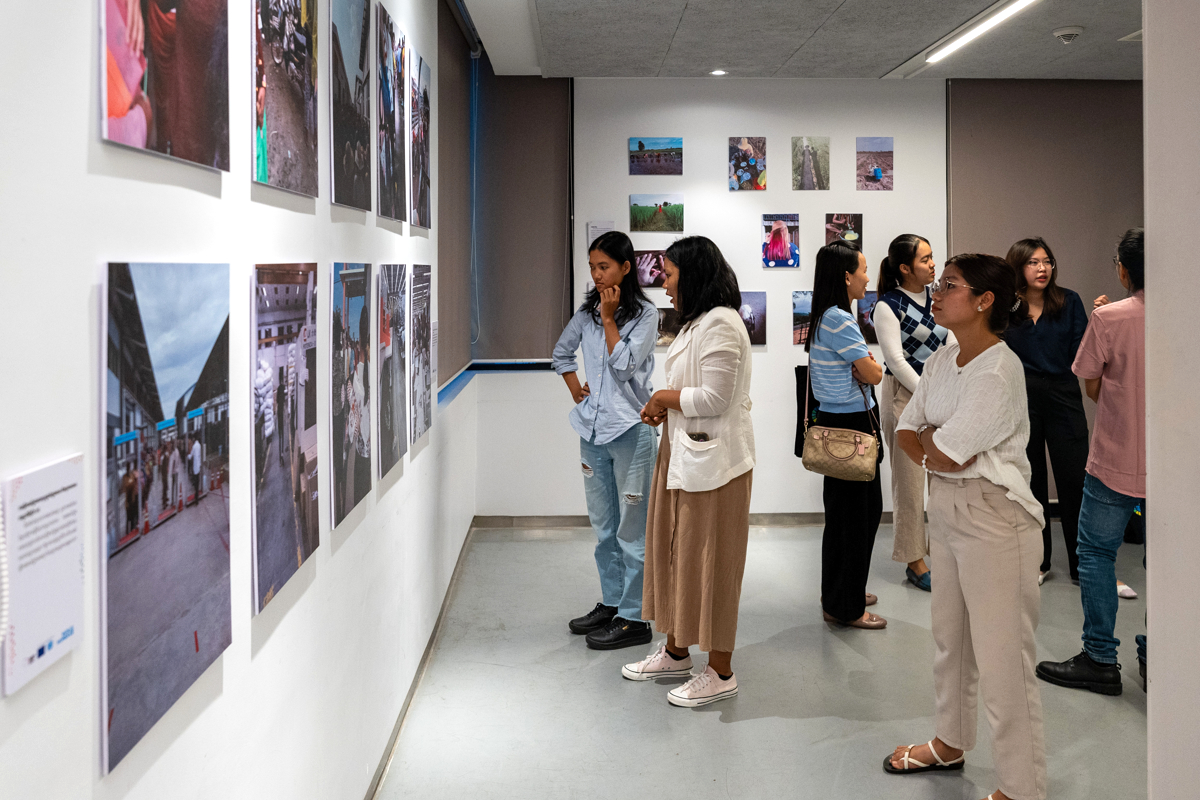Photo essay: Women migrant workers in and from Cambodia use photography to share their lives
Date:
Author: Tanaporn Piriyasupasin
To increase their visibility and gain a deeper understanding of women migrant workers’ experiences, UN Women Cambodia jointly developed a three-year-long participatory photography project as part of its “Safe and Fair Programme” engaging 28 female migrant workers in and from across Cambodia. Using mobile phones and cloud storage, these women migrant workers documented their lives while keeping their daily routines intact.

Taken from these women’s own perspective, the photographs offer a unique and intimate view of their daily lives that would have otherwise been inaccessible. These images highlight their lived experiences, capturing their strength, courage and resilience.
In October a public exhibition of the photography took place in Phnom Penh, Cambodia. The photographs were exhibited with captions narrated by the participants adding another layer of meaning.
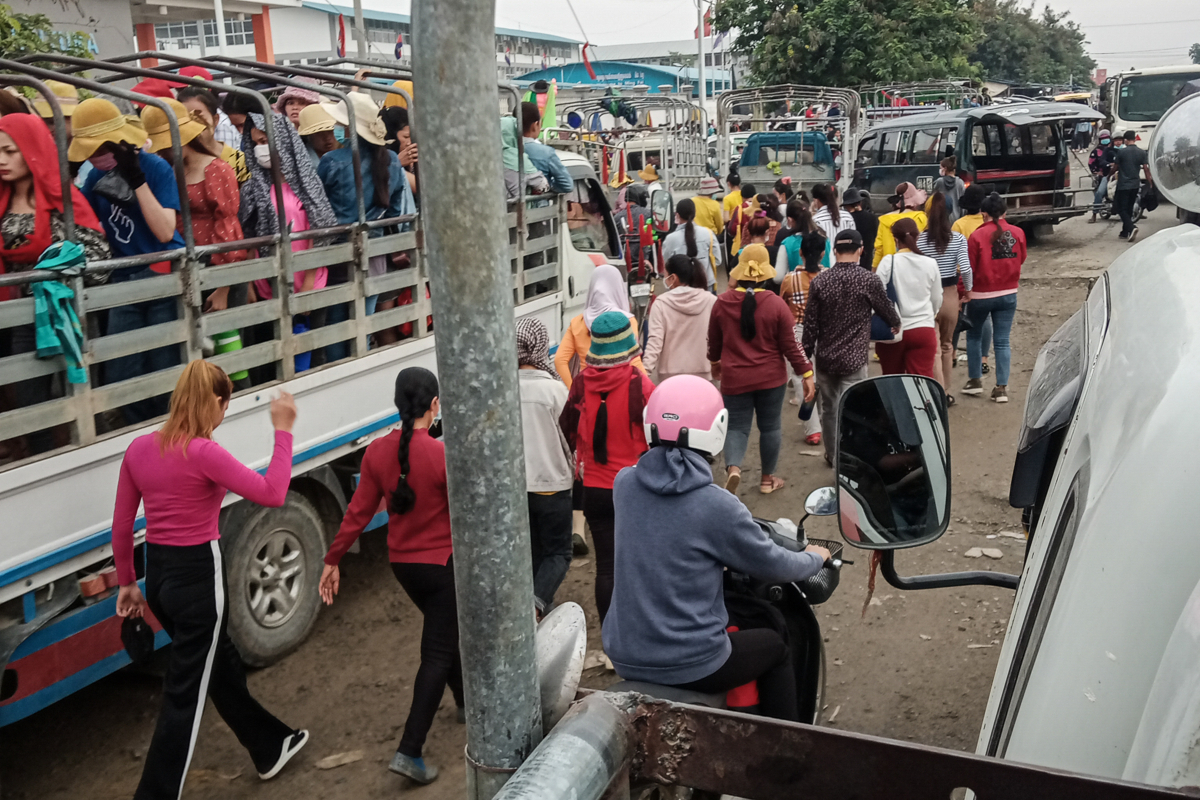
![]()
I wanted to show that the crowded road is difficult. The traffic jam is always an issue getting to work. It had been raining early morning. It’s cold on the bus and people use towels to protect themselves from the rain and the sun.”

![]()
This is a self-portrait showing my sadness that my daughter lives with their father in Thailand. I feel very helpless. My husband and I divorced, 5 years later my husband came to Cambodia and asked to take my daughter to visit Thailand. I did not allow her to go but my husband just took her. This was December 2021, and I haven't seen her since.”

Photo: Women Migrant Workers participatory photography project/UN Women Cambodia

Photo: Women Migrant Workers participatory photography project/UN Women Cambodia
![]()
This is my poor life with no job. I have nothing to eat, just 2 eggs for 4 family members, it also reflects my life in Thailand because when I worked there, I had an unstable job, I experienced having nothing to eat.”
![]()
I am busy planting by September, I will work every day from morning till 11am then 1 pm till I finish. We are planting 1 hectare a day; I have my own land but work on the land of others too.”
![]()
When I plant her own land, I am the team manager, but when I go to other people's land, I am part of the team.”
![]()
Everyone in the team has their own land and we rotate across the land.”
![]()
“We have a drink and eat together, then we continue to plant the rice. The unity of teamwork is really important, we feel like sisters in heart, we need a good relationship to work together. It's easier to work with men as they work faster and can carry heavy loads. But I feel closer with the female team.”
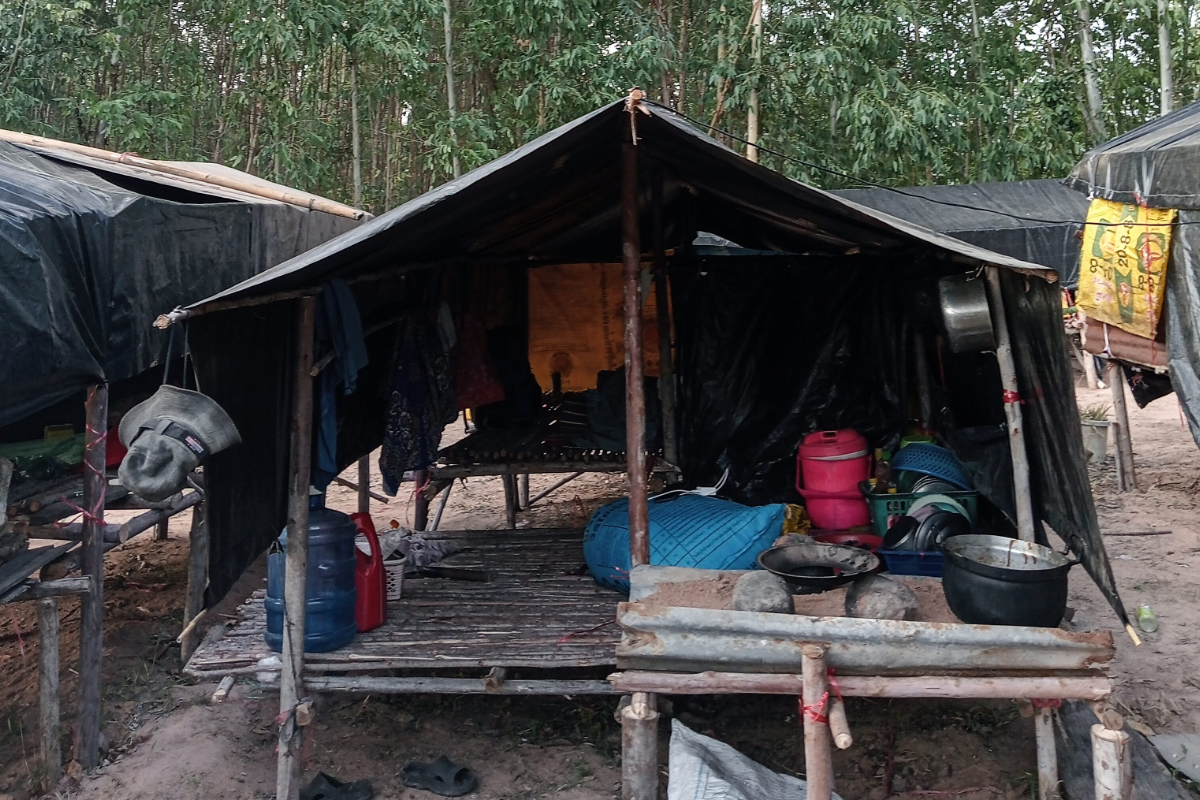
![]()
This is where I live in Thailand, when we arrive at the farm, we build our own house. I stay here alone. My Aunt and uncle helped me as they have experience in building such a house. I miss my home. There, I have my own room and bed but here I live like this. There is no proper sanitation, when we take a shower, we use a jar and ladle. I will stay until Pchum Ben then migrate for the sugar cane season. I do this because there is limited opportunity in Cambodia for me. I just follow the seasonal work.”
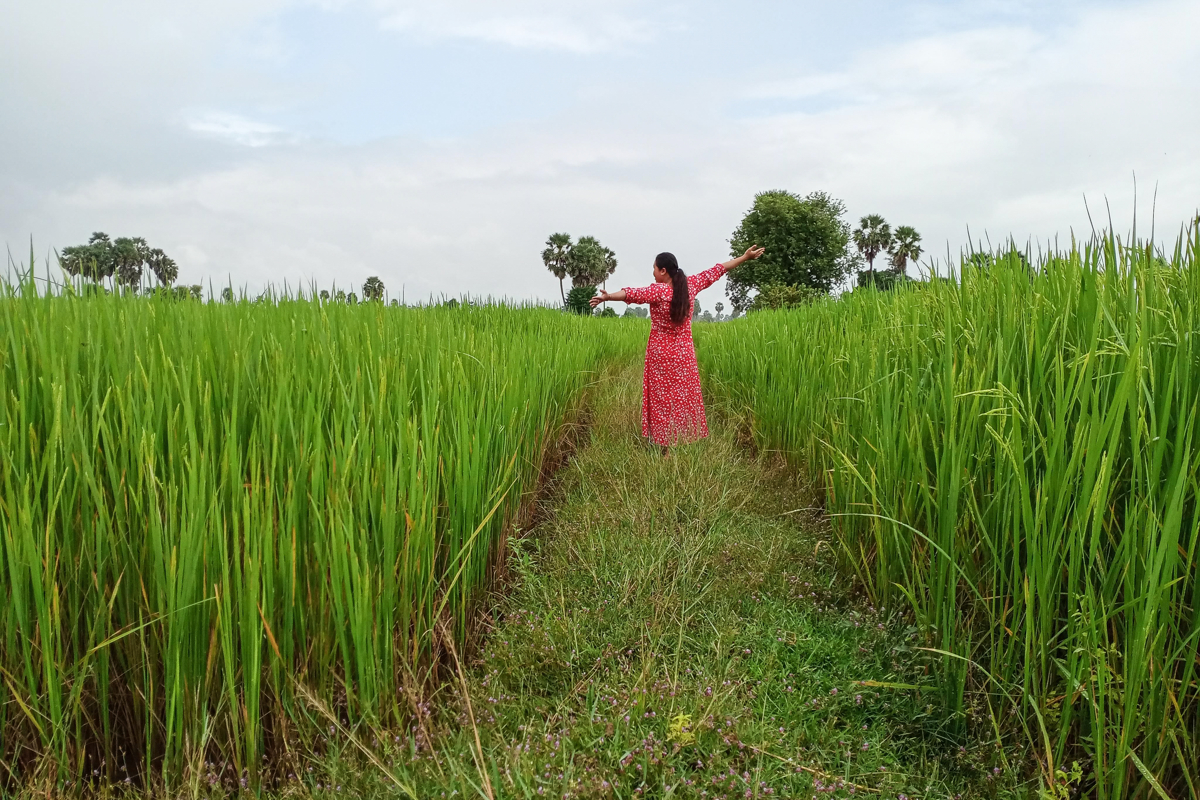
![]()
I am happy with my own rice harvest. I work as a farmer and did not expect such good results.”

In this self-portrait the participant reflects on her previous experience of migrating for work. She has worked in construction in both Thailand and Cambodia, when she was sweeping the floor and saw her shadow it reminded her of her migration journey, she feels she gained experience and income working there.

![]()
I wanted to show my husband’s hands, this is what hard-working hands look like.”
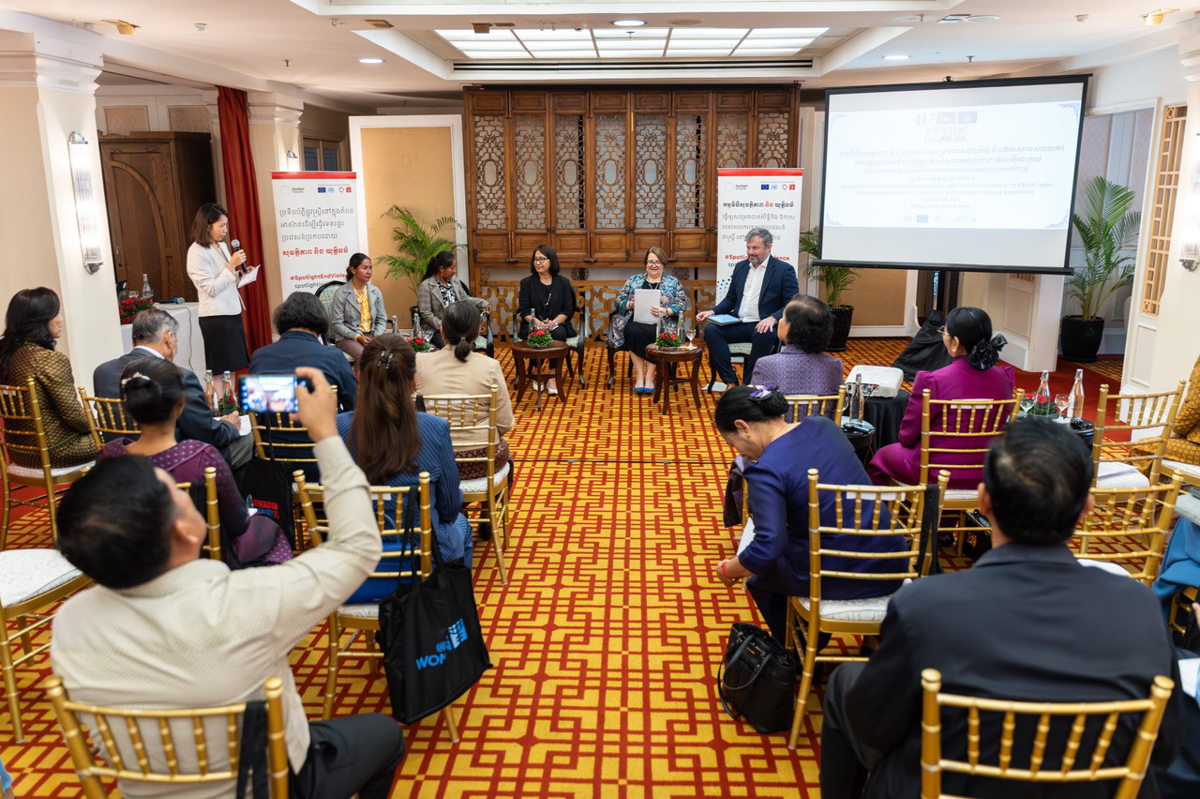
The exhibit was preceded by a panel discussion attended by 25 government officials from six ministries, the National Assembly and the National Police.
“These photographs shared by women migrant workers can help other women and people to understand and learn more about migration, so that they can be aware of the reality before deciding to leave or to stay,” said Chou Bun Eng, Secretary of State of the Ministry of Interior and Permanent Vice-chair of the National Committee for Counter-Trafficking, at a panel discussion on the project. “For me, these photographs are vital and useful to make our society safer.”

Hang Lina, Secretary of State of the Ministry of Planning, praised the project’s positive impact on the women migrant workers: “The work UN Women has been doing in empowering women migrant workers to understand challenges and express their experiences by using photographs is excellent! The work supports women to obtain new skills, increase their confidence and exchange their experiences with peers.”
The participants themselves said the project made them feel recognized and heard within their communities and families, while increasing public awareness of their lives and challenges.
“I’ve had the opportunity to become more confident and gain a clearer understanding of myself,” shared one participant.
Project participants said they also gained valuable knowledge of photography and communication skills, such as self-expression and critical thinking. “I never expected that I would be able to effectively use my photographs to tell my stories,” confessed another participant.
Participants underscored the importance of using a visual approach coupled with personal narratives to enhance understanding and promote safe and legal migration practices. They also highlighted the need for greater access to resources to ensure migrants’ safety and well-being, and called for stronger collaboration between governments, civil society organizations and international organizations to ensure migrants’ protection and to promote safe migration.
View the photography exhibition online: Photography Exhibition of Women Migrant Workers' Experiences | Flickr
Safe and Fair: Realizing women migrant workers’ rights and opportunities in the ASEAN region (2018-2023) is part of the Spotlight Initiative, a global initiative of the United Nations (UN) and the European Union (EU). Its aim is to eliminate all forms of violence against women and girls. Safe and Fair (SAF) is implemented by ILO and UN Women with the overriding objective of ensuring that labour migration is safe and fair for all women in the ASEAN region.
